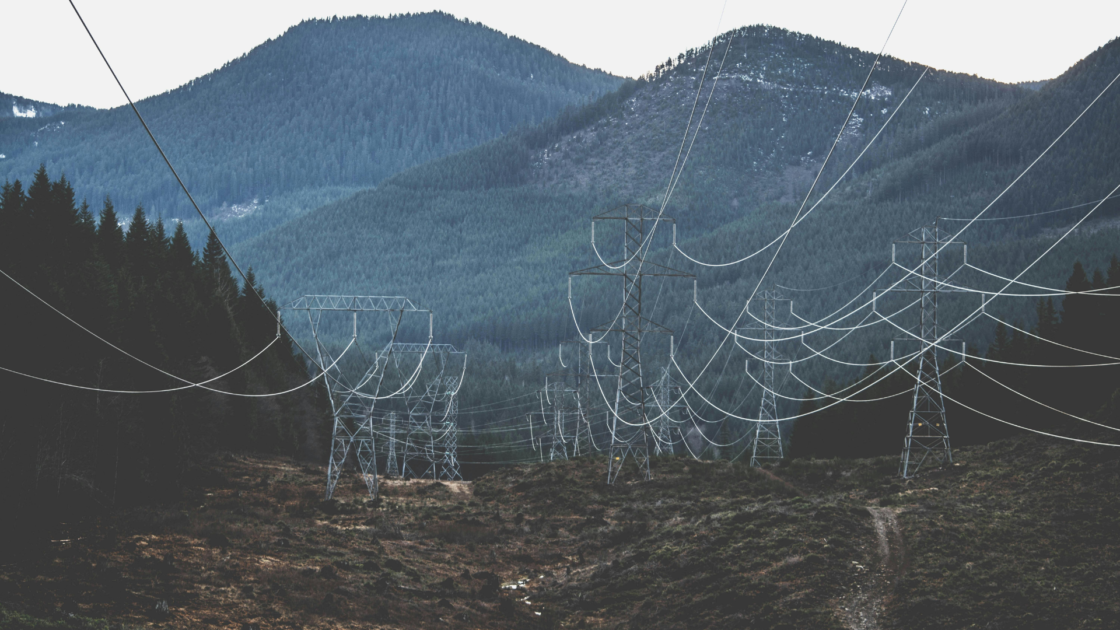
Transmission and distribution (T&D) comes into play once electricity is generated. You can think of transmission lines as highways for electricity—they allow it to travel over long distances at very high speeds.
The reason electricity is sent over high-voltage transmission lines is that it helps minimize energy loss during the journey. When electricity travels at low voltages, it loses a lot of energy as heat. However, by stepping up the voltage (increasing the power), the system can send it over long distances with less loss.
Voltage refers to the pressure that pushes electric current through the wires. Higher voltage means more power can be sent with less loss over longer distances. That is why power is transmitted at high voltage but must be reduced when it gets closer to homes and businesses, where lower voltage is safer.
There are two main ways to transmit high-voltage electricity: HVDC (High Voltage Direct Current) and HVAC (High Voltage Alternating Current).
HVAC is the traditional method used in most transmission systems. It relies on alternating current, where the flow of electricity changes direction regularly. This method is widely used because it is easier to step up and step down the voltage using transformers.
HVDC is a more modern method that uses direct current, where electricity flows in one direction. It is becoming increasingly popular, especially for long-distance transmission, because it reduces energy losses over very long distances. HVDC is also better for connecting different types of power grids or integrating renewable energy sources.
Both methods have their advantages, and many grids use a combination of the two, depending on the specific needs of the region and the type of energy being transmitted.
Types of Transmission Lines
There are different types of transmission lines, and each serves a specific purpose depending on the distance electricity needs to travel and the environment in which it is transmitted. The main types include:
Overhead Transmission Lines: These are the most common and are easily recognizable by their tall towers and wires stretched across long distances. Overhead lines are cost-effective and can carry electricity over hundreds of kilometres, though they are exposed to weather conditions like storms, which can cause disruptions.
Underground Transmission Lines: In urban areas or regions where aesthetics and space are a concern, underground cables are used to carry electricity. While they are protected from weather and provide a cleaner landscape, underground lines are more expensive to install and maintain.
Submarine Transmission Lines: These lines are laid underwater and are typically used to connect islands or offshore wind farms to the mainland grid. Like underground lines, they are more expensive and harder to repair, but they offer a vital solution for long-distance transmission in specific environments.
Substations and Transformers – Preparing Electricity for Local Use
The electricity at this point is still too powerful for direct use—it is at a much higher voltage than what is safe for homes or businesses. To make it usable, it needs to go through substations. A substation is like a pit stop in the journey, where the electricity is transformed.
This is done using transformers. The job of a transformer is to reduce (or “step down”) the voltage to a lower level that is safe to use. Imagine if you tried to charge your phone using electricity at the same voltage that powers an entire city—you would instantly fry it! Transformers help by lowering the voltage to a safer level.
There are many substations throughout the transmission network, and they play a crucial role in managing electricity flow, balancing supply and demand, and ensuring that electricity reaches where it is needed.
Distribution – Getting Electricity to Your Neighborhood
Once the electricity has been stepped down to a lower voltage, it enters the distribution system. This is the final leg of the journey, where electricity is delivered directly to homes, businesses, schools, and other places through distribution lines.
These lines are the wires you see running along streets and into buildings. Unlike transmission lines, which are usually high above the ground and carry electricity over long distances, distribution lines operate at lower voltages and shorter distances, bringing electricity into everyday spaces.
The grid acts like a web, connecting power plants to consumers. If one part of the grid is down—whether because of a storm or equipment failure—electricity might not reach its destination, leading to power outages.
